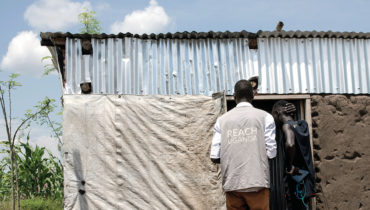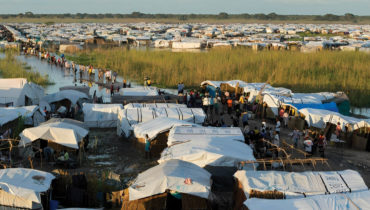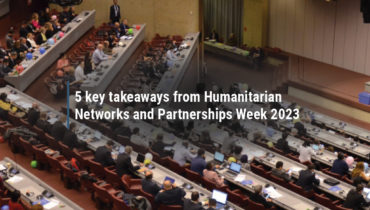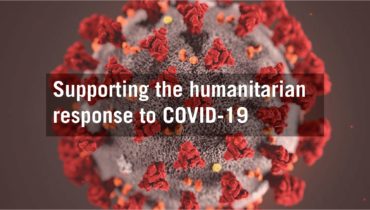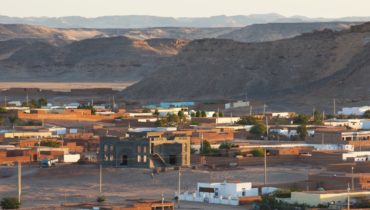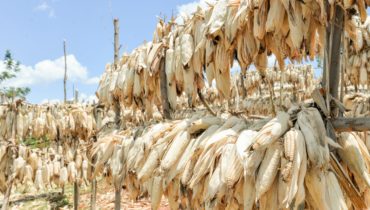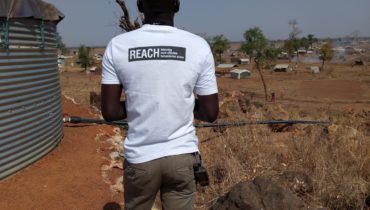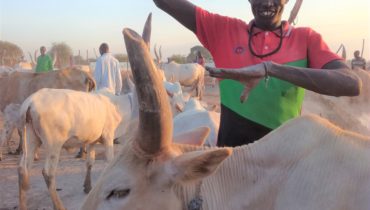Kenya: Half of the assessed households report insufficient access to food at Dadaab refugee complex
24 October 2018
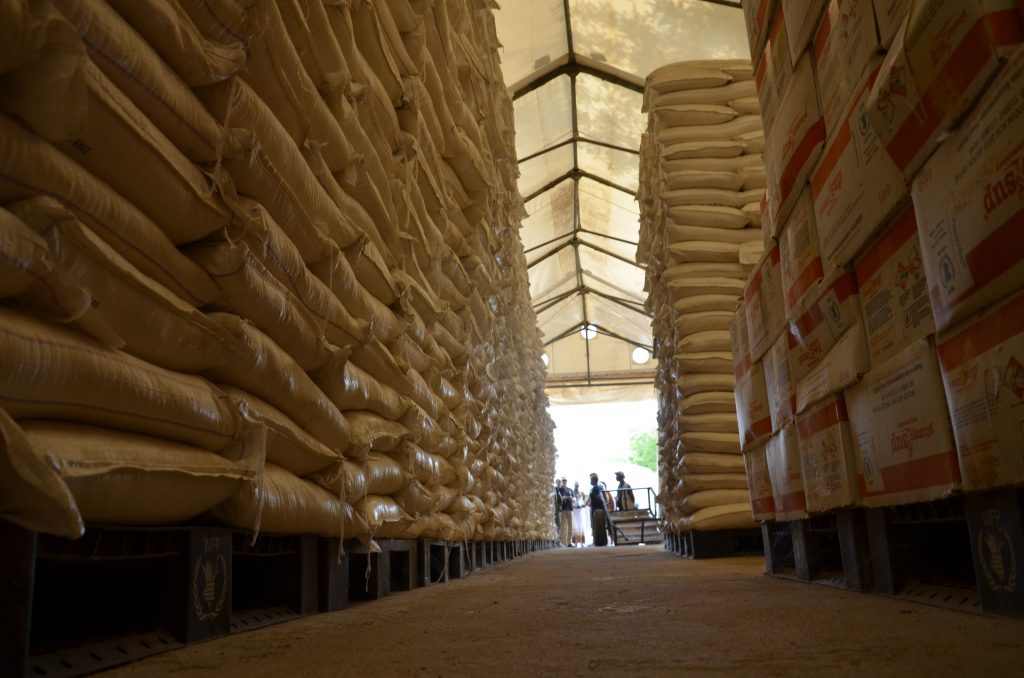
Food distribution in Dadaab by the World Food Programme is done on a monthly basis. For the past years, WFP has been forced to cut its food rations due to funding shortages. The picture is from Hagadera camp from February 2017 following a 50 percent cut to ratios. WFP was later able to icrease ratios again. © UNHCR/Assadullah Nasrullah
A year ago, the World Food Programme announced that it was forced to cut food rations by 30 percent for the refugees living in the Dadaab and Kakuma camps in northern Kenya due to insufficient funding. Since then little has changed and fresh assessment conducted by REACH finds that food remains the most pressing humanitarian need reported by the residents of Dadaab, one of the biggest refugee camp complexes of the world.
The refugee complex of Dadaab is home to an estimate of 208,000 registered refugees of which the vast majority are Somalis who fled conflict and drought in their home country several decades ago. Today, Dadaab is a scene of protracted displacement with many residents representing both second-generation refugees as well as refugees from recent waves of displacement. Despite an UNHCR-led voluntary repatriation programme, ongoing conflict, ensuing instability and continued drought in Somalia have meant that vast numbers of refugees are both unable and unwilling to return to Somalia. These refugees have chosen to stay in the camp regardless of the challenging conditions they face in Dadaab.
Building on past collaborations on developing data collection tools and methodologies with the Norwegian Refugee Council, REACH conducted a multi-sector humanitarian needs assessment investigating vulnerabilities and gaps in accessing services as experienced by camp residents. Data for the assessment was collected in August through surveys reaching almost 300 households in Dagahaley, Ifo and Hagadera camps.
As reflected in recent developments, the assessment founds that food was the most pressing need across the entire Dadaab refugee complex. More than 80 percent of respondents reported that their main food source seven days prior to the assessment was humanitarian assistance, and half of the households perceived not to have had sufficient access to food. One in three noted that they had no access to livelihood opportunities with which they could support themselves.
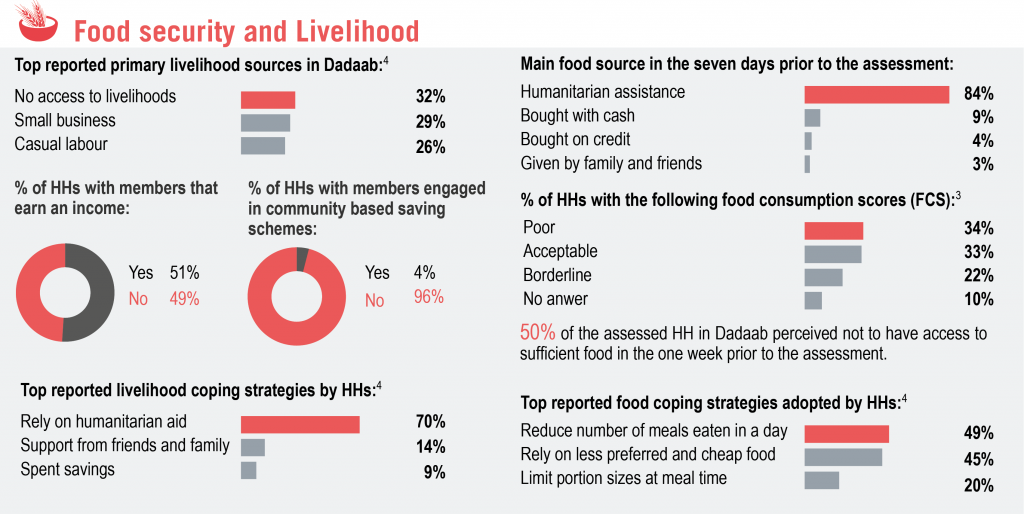
The needs assessment conducted in Dadaab revealed that half of the respondents lacked sufficient access to food and experienced constraints in making a living.
Despite limited opportunities in generating additional income, one in three households reported small businesses and one in four casual labour as sources of livelihood. Yet, the impact of these income streams was noted to be minimal.
Findings regarding other humanitarian needs highlighted shelter and non-food items as key priorities. A majority of household reported a lack of bedding materials, mosquito nets, water storage equipment and hygiene items as needs. In spite of the mentioned needs, slightly over 90 percent of the assessed households reported having access to a functioning latrine and half of the households had access to a water point that allowed for water collection in half an hour or less.
The ongoing dependency of Dadaab’s refugees on aid and the fluctuating funding streams demonstrate the need to strengthen livelihood strategies and programming for refugees living in the camps. Providing refugees with alternative livelihood opportunities could potentially leverage existing basic services including shelter, education and water infrastructure available in the camp. By strengthening the ability of the residents of Dadaab to earn an income, residents would be given the chance to use their purchasing power beyond basic services.
For a more comprehensive overview of the findings from the multisector needs assessment, please visit Kenya’s page on the REACH Resource Centre and read the full Multi-Sector Needs Assessment: Dadaab Refugee Complex Garissa County, Kenya, August 2018 and the individual factsheets for Dagahaley, Ifo and Hagadera camps.


